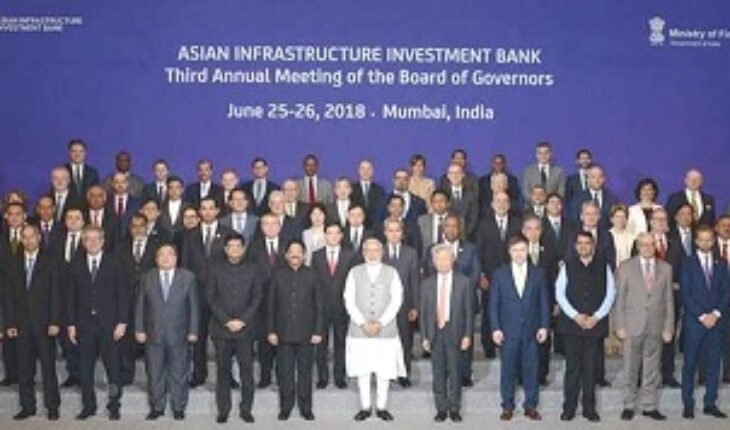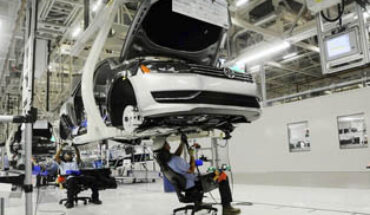“Asia’s economy has become a global heavyweight — after its economic growth far outpaced the global average for nearly three decades — and is assuming leadership in new areas with Asian developing countries now accounting for 60 percent of global growth, while roughly two-thirds of global trade is part of value chains passing through Asia,” Jin Liqun, President, Asia Infrastructure Investment Bank (AIIB) said while addressing the Annual Meeting of the AIIB Board of Governors here today.
Addressing the Annual Meeting titled “Mobilizing Finance for Infrastructure: Innovation and Collaboration,” Liqun said that even today 11 percent of Asia’s population remains in poverty that is concentrated in areas not having good global market connectivity. “Economic openness and investment in infrastructure drove Asia’s growth in the previous decades and now, Asian populations support global economic integration which brought benefits to the region. A 2014 Pew Global Attitudes survey found that most Asian countries see trade as a job creator. Unfortunately, protectionism practiced by some countries is likely to dim the prospects for them and other countries in the world,” he said
Noting that Globalization can be disruptive, he said that a key task of governments is to ensure that benefits of trade are widely spread — to help losers adjust and become winners. When China joined the WTO, free trade was a challenge for many sectors, particularly agriculture, which was not to China’s comparative advantage. But the Chinese government implemented crucial reforms and economic restructuring, and improved its social policies and income redistribution – with the result that in China, globalization has become popular with many having benefited, he said.
Highlighting China’s success which rested on the government’s willingness to adapt short-term sacrifices and the people’s embrace of reform, he said where prospects for developing Asia were concerned – the question was “Will we continue to have an open global trading system or will the world retreat into protectionism?”
“I urge some developed countries to resist protectionism and remain open, and developing countries to continue opening up. We must rejuvenate and rethink those systems which may be weakening to find a path forward in the 21st Century—the Asian Century – and also revitalize the global economic institutions. As developing countries increase their share of the world economy, they should have greater weight in the multilateral institutions.”
“A key feature of developing Asia’s success to date is aggressive infrastructure investment. Between now and 2030, Asia’s investment in infrastructure must rise to US$ 2 trillion a year, and this investment financing should come from multiple sources— domestic and international, public and private.”
“This task requires joint effort, and it is because of this, the partnership is encoded in the DNA of AIIB. Many of our initial projects have been prepared in collaboration with other MDBs—the World Bank, Asian Development Bank, European Bank for Reconstruction and Development and the European Investment Bank. We have stand-alone projects and expect more of these in future as we increase our capacity with quality being first priority, and ensuring each project being financially sustainable, environmentally friendly and accepted by local people.”
“Our members are involved in a wide range of regional infrastructure and trade arrangements and the “Belt and Road Initiative” is one such arrangement where China invites other sovereign nations and multilateral partners to cooperate and collaborate in line with the principles of broad consultation, joint contribution and shared benefits.”
“Today, the average debt for Asian countries is at a favorable level and continued rapid growth means countries can cautiously take on more external debt. But some countries face unsustainable external debt and need to adjust their policies. This issue of external debt sustainability is one of the reasons why foreign financing must work in partnership with domestic sources, including the domestic private sector and local governments.”
Focusing on pricing of infrastructure services and cost recovery, he said “China opened up in the early 1980s, facing mounting infrastructure constraints and scarce fiscal resources, but the government’s policies moved toward cost recovery, particularly in power and roads. China now has more kilometers of toll roads than any other country. People, who had to cope with stiff tolls and high utility charges, are now benefiting from extraordinary infrastructure facilities, due to rational pricing that enabled the networks to expand quickly. Malaysia and Thailand are good examples of cost recovery in the power sector with each having average electricity tariffs above average cost and making the industry profitable along with high electricity quality.”
Liqun said that in some developing countries, pricing of utilities — especially for households – fell short of cost recovery and, if not addressed promptly, infrastructure bottlenecks will continue to slow down economic development. “Environmental and social sustainability is a fundamental aspect of AIIB’s support for infrastructure development and enhanced interconnectivity in Asia. Consistent with the United Nations’ Sustainable Development Goals, we recognize the need to address the three dimensions of sustainable development—economic, social and environmental—in a balanced and integrated way.”
“In Gujarat, a US$ 329-million loan will support the improvement of rural roads for 1,060 villages. Connectivity is essential for accessing health and education and for participating in the market economy. These roads will benefit eight million people, of whom one-sixth are below the poverty line. Typhoons and floods are responsible for 80 percent of natural-disaster-related deaths in the Philippines, where the AIIB is partnering with that Government and World Bank to upgrade waste management and modernize pumping stations along Metro Manila’s main waterways.”
“The past year also saw AIIB’s “first loan outside Asia” (to non-regional members) — where AIIB’s US$ 210-million investment in Egypt will transform an “open desert” in Benban into a solar power park — thus hastening Egypt’s use of renewable energy sources and decreasing its dependency on gas and oil. We have been approached by countries in Africa, Latin America and Europe looking for AIIB’s help. We focus on Asia, but we also support development in other regions.”
“Another way of bridging the infrastructure financing gap is to create a mechanism to mobilize private capital from global long-term investors such as pension funds, endowments and insurance companies. An example is our USD150-million investment in a fund to make private equity investments in India’s infrastructure sector, with Morgan Stanley as the fund manager. Through this kind of fund, we can reach smaller projects that would not be efficient for AIIB to take on directly. And this week, we have also agreed to invest US$100-million in India’s new National Infrastructure and Investment Fund — an innovative new mechanism to attract more private capital to meet this country’s huge infrastructure needs.”
“We are investing in infrastructure in a wide range of countries — investments that are already starting to have an impact. But we must ramp up quickly because infrastructure needs in developing Asia are huge. We need to work in partnership, particularly with the private sector and local governments. Solid global growth is crucial for our members to meet their objectives, and an open trading system is a foundation of that global growth,” Liqun concluded.






